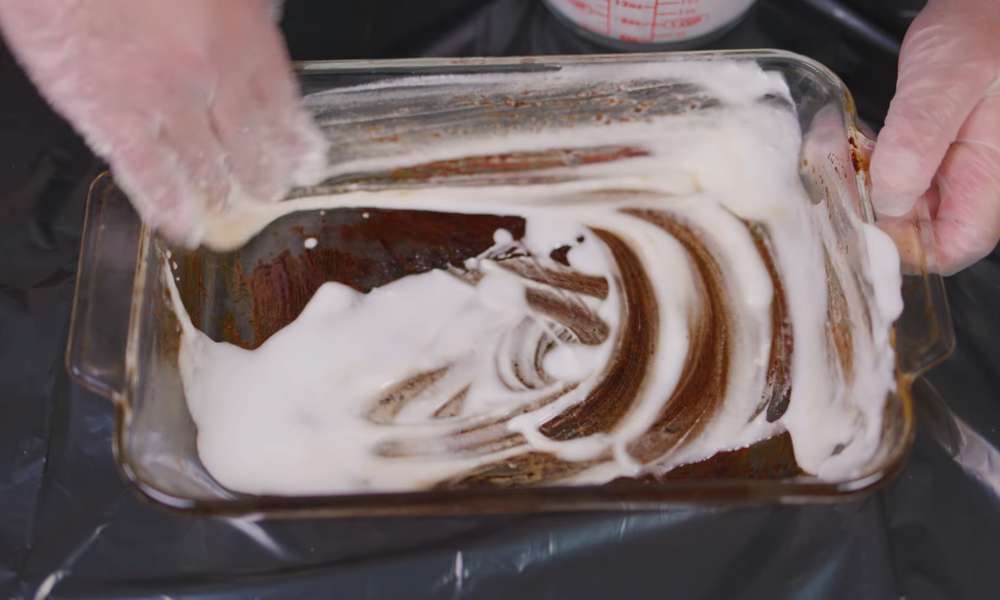Removing burn marks from glass cookware can be a challenging task, but with the right techniques, you can restore your pots and pans to their original shine. Burn marks on glass cookware not only affect its appearance but can also impact cooking performance by causing uneven heating. Fortunately, there are several effective methods to tackle these stubborn stains, using both natural ingredients and commercial cleaners. This guide will walk you through the steps to remove burn marks from glass cookware, ensuring your kitchen essentials look as good as new. Whether you’re dealing with recent spills or long-standing scorches, these tips will help you achieve a spotless finish.
You Will Need:
- Baking Soda
- Vinegar
- Water
- Lemon and Salt
- Sponge Or Soft Cloth
What is Glass Cookware?
Glass cookware refers to cooking vessels made entirely or predominantly from glass materials. These pieces are valued for their non-reactive properties, meaning they do not alter the flavor or chemical composition of food, making them ideal for acidic dishes like tomato sauces or citrus-based recipes. Glass cookware is also appreciated for its ability to withstand high oven temperatures, making it versatile for baking and roasting. Its transparency is a practical feature, allowing cooks to monitor food as it cooks without lifting the lid. While glass is durable, it requires careful handling to avoid thermal shock and breakage. Proper maintenance and gradual heating adjustments can help preserve its integrity and safety in the kitchen.
1. Common Reasons for Burn Marks on Glass
Burn marks on glass cookware can occur for several reasons, often related to the cooking process itself. One of the most common causes is cooking at excessively high temperatures. Glass conducts and retains heat efficiently, which means foods can quickly overcook or burn if the heat isn’t monitored closely. Another frequent culprit is food residue left on the cookware; even small amounts can carbonize under heat, leading to stubborn stains. Additionally, sugary foods are particularly prone to burning onto glass surfaces, as sugar can melt and caramelize at high temperatures. Understanding these common causes can help you avoid them and maintain your glass cookware in top condition.
2. Preparation for Cleaning
Before tackling the burn marks on your glass cookware, it’s essential to gather all the necessary cleaning materials. You’ll need baking soda, vinegar, lemon, mild dish soap, and scrubbing pads suitable for glass surfaces. Ensure you have everything at hand to streamline the cleaning process. When preparing for cleaning, safety should also be a priority. Wear rubber gloves to protect your hands from harsh cleaners and avoid any potential skin irritation. Additionally, make sure your cookware is completely cooled down before you begin cleaning to prevent any heat-related accidents. Preparing effectively will not only make the cleaning process smoother but also safer.
3. Methods for Removing Burn Marks
Removing burn marks from rhinestone cookware can be efficiently handled with a few simple methods:
Method 1: Baking Soda Paste
Mix three parts baking soda with one part water to create a thick paste. Apply this mixture directly to the burn stain on your glass cookware and let it sit for about 15 minutes. Using a soft scrubbing pad, gently rub the paste in a circular motion; this will help lift the stains without scratching the surface. Rinse thoroughly with warm water to remove any residue.
Method 2: Vinegar and Baking Soda
First, sprinkle a generous amount of baking soda over the stained area. Then, pour white vinegar over the baking soda and watch as it fizzes and bubbles; this reaction helps break down the burnt residues. Allow the mixture to work on the stains for about 30 minutes before scrubbing lightly with a non-abrasive pad. Rinse well with water.
Method 3: Lemon and Salt
Cut a lemon in half and sprinkle salt on one of the cut sides. Use the lemon half as a scrubber, working the salt into the burn marks. The acidity of the lemon paired with the abrasiveness of the salt effectively removes stains while adding a natural shine to the glass. This method is also great for routine cleaning to keep your cookware looking new. Rinse thoroughly after scrubbing.
4. Additional Tips and Tricks
To keep your glass cookware in pristine condition and prevent burn marks, it’s important to master a few preventive measures and maintenance tips. Start by monitoring cooking temperatures closely; glass cooking utensils do not require as high heat as metal varieties, so using medium or low heat can prevent food from sticking and burning. Routinely cleaning your cookware immediately after use will also help avoid the buildup of stubborn stains. Be gentle during cleaning, avoiding harsh abrasives or metal scouring pads that can scratch and weaken the glass. Instead, opt for softer scrubbers and ensure thorough rinsing to keep the glass clear and smooth. Adhering to these simple guidelines will extend the life of your rhinestone cookware and maintain its aesthetic appeal.
Conclusion
Maintaining the appearance and functionality of rhinestone cookware involves understanding the causes of burn marks and employing the right methods to remove them. By using simple, effective cleaning techniques such as baking soda paste, vinegar mixtures, or lemon and salt scrubs, you can tackle tough stains and keep your cookware looking like new. Regular maintenance and careful cooking practices will further enhance the longevity of your glass cooking utensil. Remember, the key is to be proactive in prevention and gentle in cleaning, ensuring that your cookware remains a valuable and visually appealing part of your culinary arsenal.

